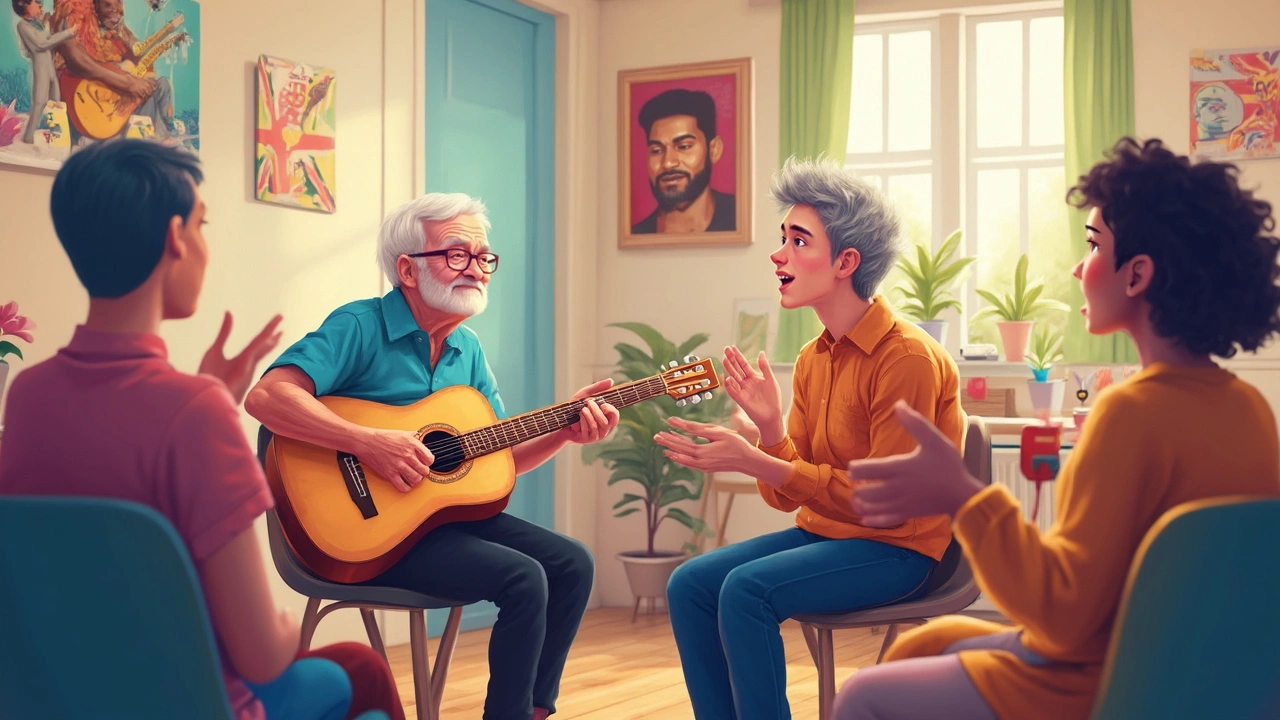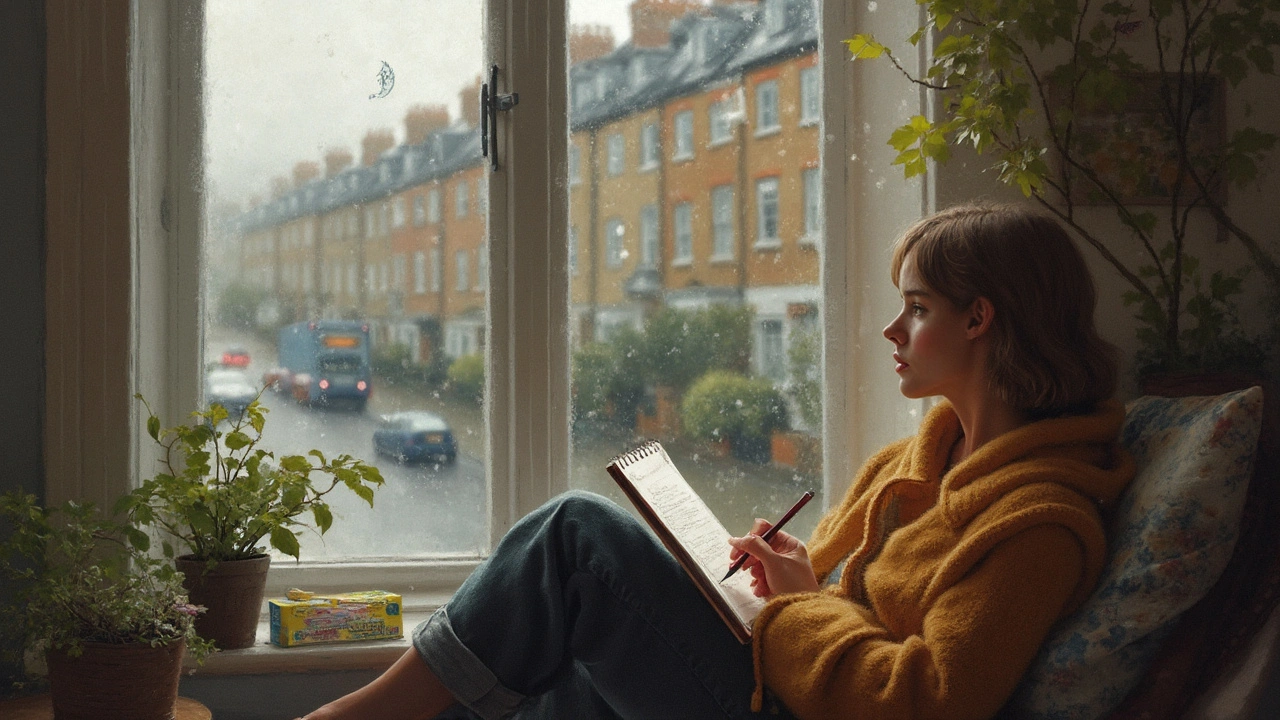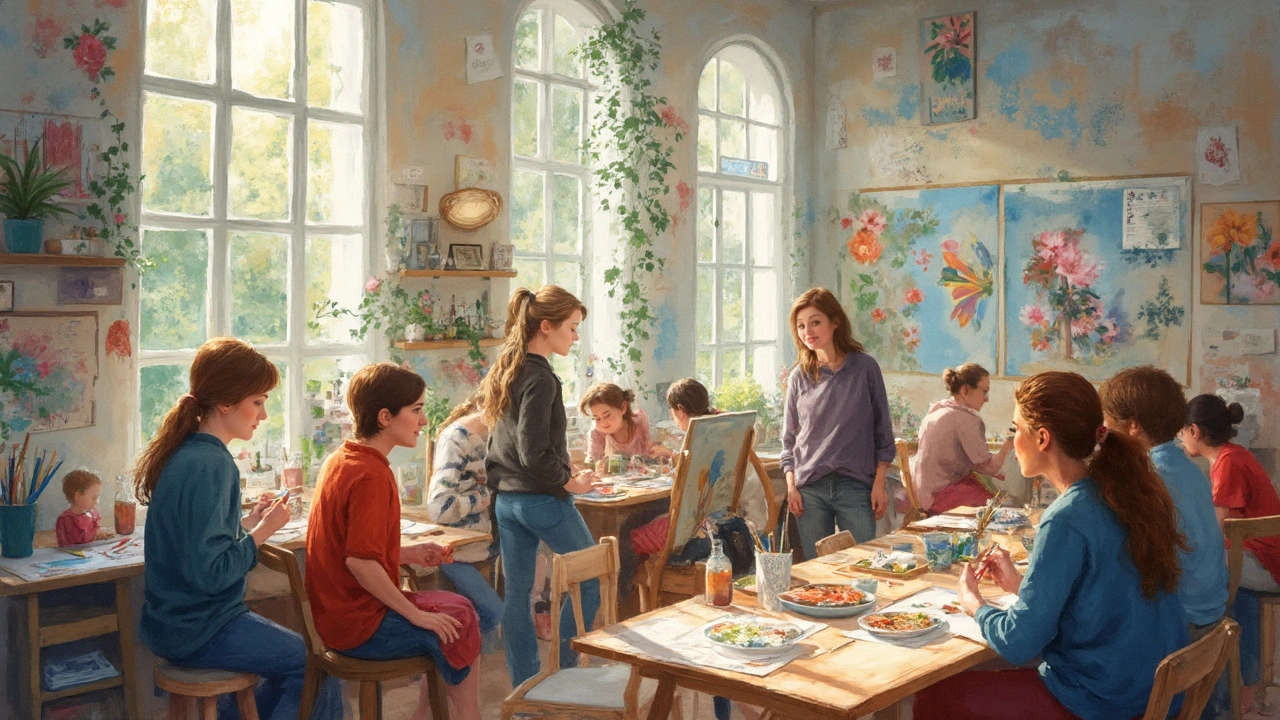Imagine fighting depression not with pills or long conversations, but with paintbrushes, music, or movement. Some folks are skeptical—how could painting or moving your body around really heal a person? Well, scientists keep digging because, honestly, the brain is wild, and the way it responds to creativity is even wilder. And get this: research proves creative arts therapies aren’t just “feel-good” hobbies—they can literally rewire our brains and reshape our mental health from the inside out. If you’ve ever felt choked up listening to a favorite song or found relief after scribbling out your feelings, you’ve already brushed up against what the science is discovering. These therapies reach places normal talk can’t always get to, and that makes them a lifeline for people dealing with trauma, anxiety, and a whole lot more.
What Are Creative Arts Therapies, Really?
So, what exactly falls under the umbrella of “creative arts therapies”? It's not just finger painting in a classroom. We’re talking art therapy, music therapy, dance/movement therapy, drama therapy—even poetry and storytelling are in the mix. Instead of focusing strictly on words, these therapies use creative activities to help people express themselves and heal. Basically, when it’s tough to talk, art or movement steps in as a translator for your insides.
Unlike just doodling or humming a tune on your own, creative arts therapies are guided by trained pros called creative arts therapists. They shape activities around your specific needs, helping people break through when regular talk therapy stalls out. And no, you don’t have to be a "good artist" or have rhythm. In fact, some of the strongest progress happens when someone hasn’t tried art or music since grade school—no pressure, just honesty and experimentation.
Creative arts therapies are supported by groups like the American Art Therapy Association and numerous peer-reviewed studies. For example, a 2021 study published in "Frontiers in Psychology" found that regular art therapy sessions lowered anxiety and improved emotional resilience in people dealing with chronic illness complications. Elsewhere, the Journal of Music Therapy reported that music therapy helped stroke survivors recover verbal communication skills by tapping into undamaged parts of the brain. This highlights something impressive: by involving more senses, you can engage brain regions that regular counseling might not reach. Plus, these therapies can bring a sense of play—something adults too often forget about—into sessions. That play unlocks creativity and vulnerability, and sometimes that’s where real change starts.
The Science of How Arts Therapies Affect the Brain and Body
This all feels a little magical, but there’s science behind it. When you sing, dance, paint, or enact stories, your brain goes to work with an intricate symphony of neural signals. Scientists have examined this using fMRI scans, watching blood flow light up regions responsible for memory, emotion, and even physical coordination. For instance, music therapy can crank up dopamine and serotonin—the brain’s “feel good” molecules—while quieting the stress circuits that drive anxiety or panic.
Here’s something wild: drawing or painting activates the prefrontal cortex, the spot in your brain that manages planning, problem-solving, and emotional regulation. That’s why art therapy is so good for trauma—it helps people process messy, tangled feelings in a safe way. In another experiment, researchers measuring cortisol, the stress hormone, found that a single 45-minute art therapy session reduced cortisol levels for over 70% of participants. That’s not just "feeling better"—it’s a real biological shift.
Dance/movement therapy isn’t just about burning calories; it directly links physical movement with emotional release. When you move your body intentionally (even if you’re not a dancer), your brain makes new connections that support self-confidence and social bonding. That’s especially powerful for people recovering from eating disorders or PTSD, who often feel disconnected from their bodies. And for anyone stuck in fight-or-flight mode, these therapies provide a safe pathway back to calm.
Here’s a tip if you’re curious: if you feel stuck while talking about your feelings, try expressing them through something physical—paint a mood, drum your heartbeat, act out a story. The way your body responds might surprise you.

Why Arts Therapies Work Where Traditional Approaches Fall Short
So, why do creative arts therapies succeed where other treatments sometimes don’t? Traditional talk therapy relies on language, logic, and memory. But trauma, anxiety, or childhood issues are usually stashed away in the parts of the brain that don’t "speak" in words. That’s why a kid who can’t talk about bullying will draw a picture of a dark cloud chasing them, or an adult who loses words to grief can pour emotion onto canvas. It’s like hacking your own operating system through images, sounds, or body movements.
Research from Drexel University in 2022 found that creative arts therapies were especially helpful for people who’d tried multiple types of talk therapy but never got results. The simple act of creating something—no filter, no fear of being “wrong”—opened doors that felt locked for years. One trauma therapist told me her clients describe the process this way: “I didn’t have to say what happened, I just let it out through paint and music.” That’s a level of honesty that’s hard to reach any other way.
Plus, arts therapies are non-linear. You don’t have to go step-by-step through your entire life story. Maybe you start with a doodle, then move to a poem, then try gentle movement. That flexibility meets people where they are, not where they “should be.” And in group settings, building creative projects together can spark connection for those who feel isolated. This approach is now showing real promise for veterans, cancer patients, and teens balancing school stress with mental health challenges—who might clam up in a standard therapy office.
If you’re on the fence, remember: you don’t need fancy supplies or to buy into every “art as healing” quote on Instagram. The act of making something—regardless of how it looks or sounds—can loosen mental knots, even for skeptics.
What Happens in a Session: Inside the Creative Process
People often picture creative arts therapy sessions as wild emotional outbursts with splattered paint and wailing guitars. In reality, session structure depends on the person and the art form, but they’re usually well-organized and surprisingly gentle. You might enter a therapist’s studio and find canvases, musical instruments, or soft mats for moving around. The therapist doesn’t demand masterpieces, just invites you to explore, and that takes the pressure off.
If it’s art therapy, you could be handed colored pencils or paint and guided to draw a memory or an emotion. In music therapy, maybe you choose instruments that match your mood and improvise along with the therapist. For dance/movement therapy, the therapist might mirror your posture, helping you notice how your body carries stress. Drama therapy could involve role-playing, using masks or props, or even storytelling games to work through emotions. No one gets “graded” or judged for talent—this is all about self-expression and feeling safe trying new things.
The therapist helps connect what happens during the creative activity with what’s going on in your life. Maybe painting yourself feeling “small” unlocks memories or helps identify what triggers your anxiety. After creating, some clients talk about what came up. Others don’t say a word, choosing instead to notice changes in their mood or body. Some sessions lead to “aha” moments, like realizing a certain melody brings comfort, or a particular movement brings back childhood joy. More often, healing comes quietly, a little more clarity or calm each time.
Group sessions can be especially powerful. Making collages about shared hopes, writing songs about friendship, or acting out skits builds trust and connection. One research review from 2023 in The Arts in Psychotherapy reported that people in group arts therapy felt less lonely and more supported compared to those in individual therapy, especially in people managing grief or social anxiety. So if you’re craving community, this approach has your back.

Getting Started and Making Arts Therapies a Part of Your Life
Maybe you’re thinking, “Hey, this all sounds cool, but how do I try it without feeling totally awkward?” The answer: start as simple as possible. Most creative arts therapists offer an initial consultation to see what feels right for you. You can find them through certified associations like the Art Therapy Credentials Board or by looking up local hospital programs and counseling centers. Some clinics even offer online art or guided music therapy sessions, so you don’t have to leave your bedroom.
If money or time is tight, you can pinch off a little dose of expressive therapy on your own. Set a timer and sketch or paint with whatever’s around—crayons work as well as oils. Listen to new genres of music and let your body move along—no steps to follow, just notice where the sound takes you. Or, try writing a letter to your younger self, or making up a five-line poem about your mood today. Keep a journal where instead of words, you draw little comics of your emotions. None of this replaces work with a trained therapist, but it can help unlock feelings and lower that boiling point before things spill over.
Be patient with yourself. Even if it feels cheesy or weird at first, your brain gets the point. Over time, these small creative steps help build resilience, awareness, and self-kindness. If you do try therapy with a certified professional, communicate openly about what feels comfortable and what feels too intense. Therapists are trained to adapt everything to meet you where you’re at. And remember: there’s no right or wrong in creative arts therapy—just the honesty of expressing what words can’t touch.
If you’ve read this far, you probably already know deep down that there’s wisdom inside creativity. Science just finally caught up. So whether you decide to join a therapy group, or just crank up a song and grab those dollar-store paints, you’re giving yourself a chance to heal in ways your mind and body already understand—even if your silent, creative side is still waking up.
